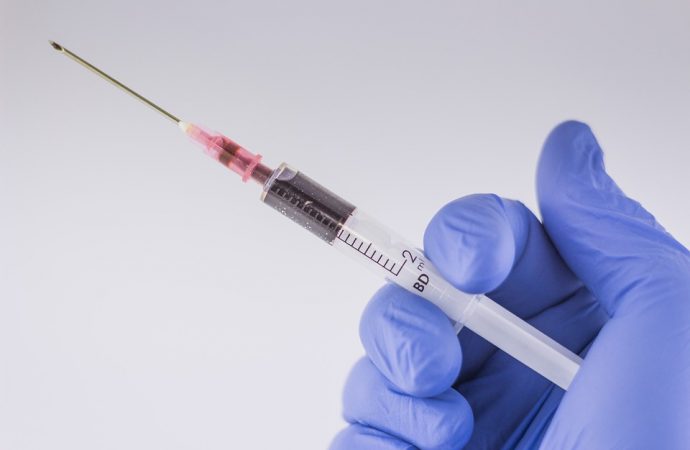Liquid biopsies in the future of cancer diagnosis.
Today cancer is diagnosed by medical imaging methods and by further histological and sometimes molecular analysis of tissue samples (biopsies) taken directly from the tumor.
The exam of tissue biopsies gives an idea of the tumor architecture: cell type and shape, cell organization within the sample and presence of blood vessels and immune cells. This information is important to start classifying the tumor by defining its histological type – the tissue it derives from – and its progression stage – how advanced and aggressive it is. The molecular analysis then, can inform about gene mutations that are present in the sample, and thus refine the tumor classification and prognosis, and help choose the most suitable therapy.
What are the drawbacks of tissue biopsies?
However, these analyses have significant limitations: a tissue biopsy, in fact, is often representative only of the region of the tumor mass it comes from, and not of the whole tumor, let alone of other possible secondary tumors (metastases) derived from the primary one and already present in other tissues.
In other words, a tissue biopsy can depict just a detail of a large picture, well focused and defined in all its components, but taken out of the context.
How to improve the efficacy of diagnostic techniques for cancer?
Researchers are trying to exploit a property of all solid cancers: tumors constantly shed cancer cells and release cell constituents, including DNA and RNA, into body fluids. For this reason, circulating tumor cells (CTCs) and circulating nucleic acids (especially DNA, since RNA is generally less stable and gets easily degraded) can be present in body fluids like blood, lymph, saliva, urine and cerebrospinal fluid.
This means that a sample of a body fluid contains information about a patient’s tumor and it can be used for cancer diagnosis.
You can already see one important advantage of liquid biopsies compared to tissue biopsies: they are promptly available. A sample of blood, saliva or urine can be easily collected and, often, with no need of the invasive and sometimes painful procedures required to extract tissue biopsies.
If certain body fluids are relevant as liquid biopsies only for particular cancer types (for instance saliva for head and neck cancers, cerebrospinal fluid for tumors of the central nervous system), blood samples can be more broadly useful.
What kind of information can be retrieved from blood samples (and liquid biopsies in general), and why is it more valuable for diagnostic and prognostic purposes compared to the information obtained from traditional tissue biopsy?
Bardelli and Pantel from the universities of Torino, Italy and Hamburg, Germany answer these questions in a perspective paper published this month in Cancer Cell.
♦Liquid biopsies provide a more comprehensive picture of a tumor. In principle, CTCs and circulating tumor DNA (ctDNA) can derive from different regions within a tumor mass, and even from different tumor metastases present in other organs. Once collected and analyzed, they can reveal the various types of gene mutations that are present overall, show how heterogeneous the tumor is, and suggest how it is progressing.
♦Liquid biopsies can allow early detection of cancer. If regular screening can help discover some types of tumors at their early stages, for other types detection is only possible when they are advanced and have become symptomatic. However, early tumor lesions already release CTCs and ctDNA that can be identified in a blood sample, thus revealing the presence of a developing tumor that is still hidden to imaging techniques.This property of liquid biopsies can be particularly useful to monitor individuals at high risk for certain cancers: blood samples can be analyzed routinely in a preventive manner, to promptly capture CTCs.
♦Liquid biopsies can detect minimal residual disease after surgery or chemotherapy. Sometimes surgery or therapy successfully eliminate a tumor but leave behind very small tumor lesions (micrometastases) that cannot be seen through current imaging methods. These micrometastases shed CTCs. Blood samples analyzed for the presence of CTCs after surgical or pharmacological treatment can identify patients that need further therapy to prevent tumor spreading.
♦Liquid biopsies can help design personalized therapies. Personalized therapies employ drugs that specifically target those molecules which drive cancer progression in a patient. They are based on the identification of protein mutations that can be targeted. CTCs and ctDNA collected from liquid biopsies can disclose the different mutations present in a tumor and thus the potential targets for the most appropriate personalized therapy.
Some practical examples of the use of liquid biopsies
Breast cancers that contain the estrogen receptor (ER) can be successfully treated with drugs against this molecule. Sometimes, though, they stop responding to the therapy because they lose the ER, and slowly give rise to ER-negative metastases. CTCs and ctDNA in a blood sample can soon show whether a tumor has lost the ER before metastases are formed, thus guiding a proper intervention to prevent tumor spreading.
Colorectal cancers containing a normal KRas protein can be treated with antibodies that block the Epidermal Growth Factor Receptor (EGFR), but they become resistant to this therapy if they start producing a mutated KRas. The analysis of CTCs and of ctDNA in a blood sample can indicate if the tumor contains normal KRas and if a patient will respond to the antibody therapy. Moreover, during and after therapy, doctors will keep monitoring CTCs and ctDNA in blood samples to detect if KRas mutations have appeared, in which case they will promptly change treatment and prevent tumor progression.
Even if the first studies on the application of liquid biopsies in cancer diagnosis and prognosis are very promising, there are still limitations to their use.
What challenges have still to be overcome to fully exploit the potential of liquid biopsies?
◊ Improve the techniques so to capture a higher number of CTCs from liquid biopsies and facilitate the detection of early stage tumors and of micrometastases.
◊ Develop more sensitive techniques to identify ctDNA in a blood sample, so to easily distinguish it from normal DNA that is released by healthy cells and is also present in the circulation.
◊ Increase the specificity of CTCs and ctDNA tests. Sometimes liquid biopsies contain cells and DNA carrying mutations that drive cancer, yet cancer will not develop. It is important to establish more efficient assays to identify specific cancer biomarkers and the combinations of mutations that most likely will give rise to a tumor. Researchers are creating a platform to collect this type of data.
In conclusion, we can now foresee a future in which a few drops of blood will tell if a tumor is developing, whether it is aggressive or benign, and most importantly how to attack it by targeting its weak points through the best-personalized therapies.
References:
Bardelli, A., & Pantel, K. (2017). Liquid Biopsies, What We Do Not Know (Yet) Cancer Cell, 31 (2), 172-179 DOI: 10.1016/j.ccell.2017.01.002



